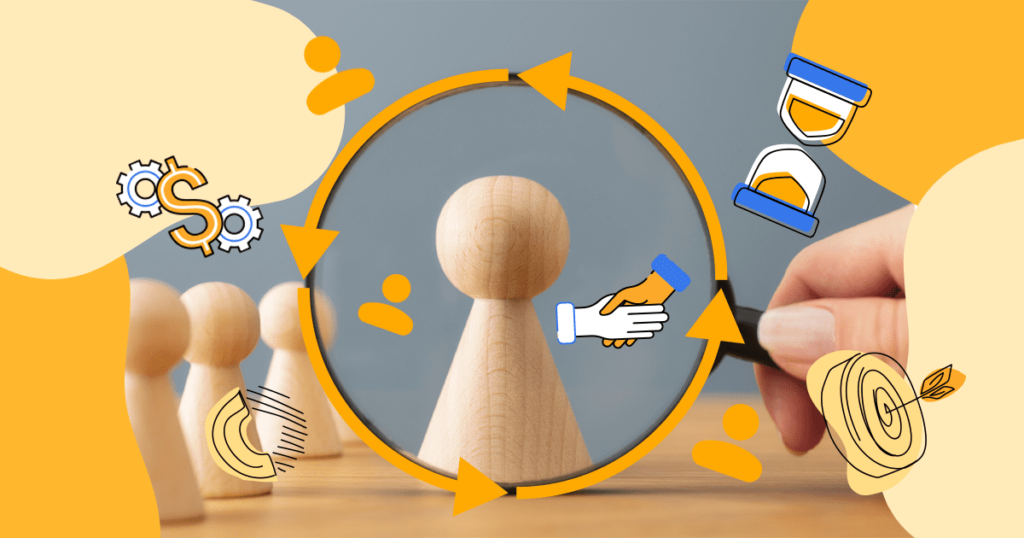Understanding how your customers make decisions is a crucial part of any digital marketing strategy, and accurate customer journey mapping can help you get it right. Here’s what you need to know to master it.
Successful digital marketing is about more than simply offering excellent products and services. It’s about getting into your ideal customer’s head and developing a solid understanding of their thoughts when they evaluate different products.
Customer journey mapping is an effective way to demystify the process your customers go through when shopping and apply what you learn to your ongoing digital marketing efforts. Here, we’ll go over how you can use it to better connect with your customers and smash your marketing goals.
- Demystifying the Customer Journey: What It Really Means
- Nailing the Different Stages of the Customer Journey
- Mapping the Customer Journey: Your Go-To Guide
- Best Practices for Supercharging Your Customer Journey Map
Demystifying the Customer Journey: What It Really Means
Contrary to what some believe, customer and buyer journeys aren’t the same. A buyer’s journey deals strictly with the customer’s decision-making process from first awareness of a product to just after purchase.
On the other hand, a customer journey covers the specific role your brand plays within a larger buyer’s journey.
- How many brand touchpoints are involved throughout the process?
- Where do your customers connect with your brand, and how often do they connect when considering a purchase?
- How present is your brand throughout each stage of the buyer’s journey?
These are just a few questions a digital marketer might ask when creating an accurate customer journey map or crafting a new campaign.
Nailing the Different Stages of the Customer Journey
Although every customer journey will be personal, there are five general stages a consumer goes through when considering products, services, or brands.
- Awareness: The point at which a consumer realizes they have a problem the right solution could solve
- Consideration: The point where the consumer knows what type of solution they need and is evaluating different options
- Decision: The point where the consumer has a solution in mind and is ready to make a purchase
- Retention: The stage where the consumer has made a purchase and is (for now) electing to stick with the solution they chose
- Loyalty: At this stage, the consumer has progressed beyond simply sticking with the brand to actively advocating for it to friends, family, and acquaintances

Mapping the Customer Journey: Your Go-To Guide
In an age when consumers have an incredible array of options to choose from, branding is the key to standing out from all the rest of the noise. Nearly 90 percent of people say a brand experience matters to them just as much as the actual products do.
Mapping out a customer journey can help you provide a great customer experience. Here’s a brief rundown of how to create a customer journey map that fits your goals and objectives.
Know the key components
The basic anatomy of a good customer journey map includes the following components:
- Buying process: Leverage data caches to zero in on the larger buying process for your customers.
- Emotions: People looking to solve a problem (like your customers) always feel something. Address common pain points and related emotions.
- User actions: This component digs deeper into customer behavior at each stage of the buying process.
- User research: Know where and how your customers like to research purchase decisions (e.g., social media or search engines).
- Solutions: This component addresses various ways you can make the buyer’s journey smoother for your average customer.
Set clear objectives
Have a solid understanding of why you’re putting together a journey map and what you’re hoping to accomplish by implementing one. If you have buyer personas to use to assess customer motives and fine-tune marketing content, take a second look at them.
And if you don’t have go-to personas ready yet (or haven’t updated yours in a while), obtain some consumer feedback with a round or two of market research.
Dive into customer experience
Consider the average customer experience each prospective customer has when perusing your catalog and evaluating possible purchases. Leverage one or two buyer personas that represent your average or ideal customer to simplify the process. Then, build your first customer journey map by answering the following questions.
Which route is your ideal customer most likely to take from discovery to post-purchase loyalty when interacting with your brand? Where and how are most customers most likely to engage with your brand for the first time?
Consider all possible touchpoints
Your brand’s current touchpoints should be part of customer journey mapping. Which ones are your customers currently using the most? Are there any you feel they should be using more than they already are?
If you have underutilized touchpoints, use research and data to understand why they’re not on your audience’s radar. Make changes accordingly.
Consider different kinds of maps
There are several kinds of maps to consider, each with its benefits. Examples include:
- Current state: Covers emotions, actions, and thoughts consumers have when engaging with a brand
- Day in the life: Aims to access emotions and actions consumers may experience throughout an average day (brand-related or otherwise)
- Future state: Anticipates future emotions and interactions consumers may have with your brand (based on current emotions and actions)
- Service blueprint: Begins with one of the above models and is expanded to include additional services, people, policies, etc.

Best Practices for Supercharging Your Customer Journey Map
Once you set up your first customer journey maps, it’s time to start looking at ways to make them more efficient. Here are some quick tips for taking yours to the next level and beyond:
- Assess your maps by undergoing a test journey yourself. It’s the best way to determine where and why your audience may be hitting obstacles.
- Collect and analyze data when it comes to all your maps. Regularly analyze the results and use your findings to make improvements. (Monthly or quarterly reviews are advisable.)
- Survey customers and members of your customer care team to gain more insight into what is and isn’t working with your mapping approach.
- Reinvest in your content marketing strategy and make sure you’re adequately targeting consumers across all stages of their customer journey.
Valuable content is truly the key to connecting with your customers and helping them see your brand as the solution they’re looking for. It is a critical step in customer journey mapping. Upgrade your content strategy today by connecting with professional, experienced content creators via a free 14-day WriterAccess trial!








